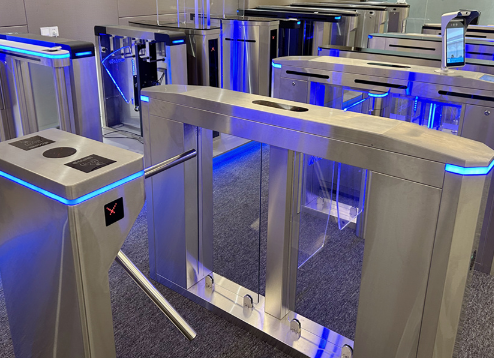
Understanding the Impact of the Environment on Turnstile Mechanisms
Introduction
Turnstiles are ubiquitous in modern society, serving as vital tools for access control in various environments, from stadiums to office buildings. These mechanisms allow for controlled entry and exit, but they are not immune to the influence of their surroundings. In this article, we will explore the impact of the environment on turnstile mechanisms, shedding light on the challenges and solutions related to their operation in different settings.
Why is Environment a Consideration for Turnstile Mechanisms?
Before delving into the specifics, it’s essential to understand why the environment matters when it comes to turnstile mechanisms. Turnstiles operate in diverse conditions, and factors like weather, temperature, and human traffic can affect their performance. Recognizing these influences is crucial for ensuring the reliable operation of these access control devices.
Environmental Factors Affecting Turnstile Mechanisms
Weather Conditions
1. Rain and Moisture
Rainwater and moisture can lead to electrical and mechanical issues in turnstile mechanisms. Waterproofing and proper drainage solutions are essential in outdoor installations.
2. Extreme Temperatures
Turnstiles exposed to extreme heat or cold may experience malfunctioning components. Temperature-resistant materials and insulation can mitigate these challenges.
Human Traffic
3. High Traffic Volume
In crowded environments, such as transit stations, turnstiles must be robust enough to handle continuous use without wearing down quickly.
4. Vandalism
High-traffic areas are also prone to vandalism, which can damage turnstile components. Durable materials and anti-vandal features are necessary to combat this issue.
Security Requirements
5. High-Security Areas
In facilities requiring strict security measures, turnstiles must meet stringent standards for intrusion prevention and detection.
Solutions to Environmental Challenges
Weatherproofing and Maintenance
6. Weatherproof Enclosures
Installing turnstiles within weatherproof enclosures can shield them from rain, snow, and extreme temperatures.
7. Regular Maintenance
Implementing routine maintenance schedules ensures that turnstile mechanisms remain in optimal condition.
Durability and Anti-Vandalism Features
8. Robust Materials
Choosing turnstiles constructed from durable materials, such as stainless steel, can increase their resistance to damage.
9. Anti-Vandalism Measures
Installing protective barriers and tamper-resistant features can deter vandalism attempts.
Customized Solutions
10. Tailored Security
css
Copy code
Turnstile manufacturers offer customizable solutions to meet the specific security needs of different environments.
11. Adaptive Technology
css
Copy code
Some turnstiles feature adaptive technology that adjusts their sensitivity and response to changing environmental conditions.
The Future of Environmentally Resilient Turnstiles
As technology advances, turnstile mechanisms are likely to become even more resilient to environmental challenges. Innovations in materials, sensors, and adaptive control systems will continue to improve their performance and reliability.
Conclusion
The environment in which turnstile mechanisms operate can significantly impact their functionality and longevity. Understanding and addressing the challenges posed by factors like weather, human traffic, and security requirements is essential for ensuring that turnstiles serve their access control purposes effectively.







